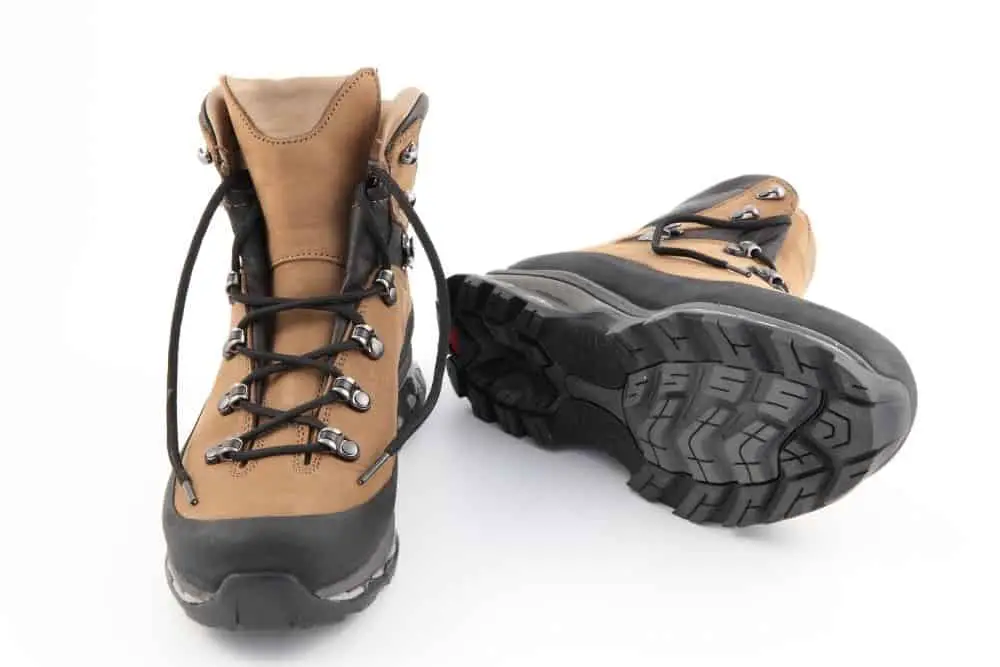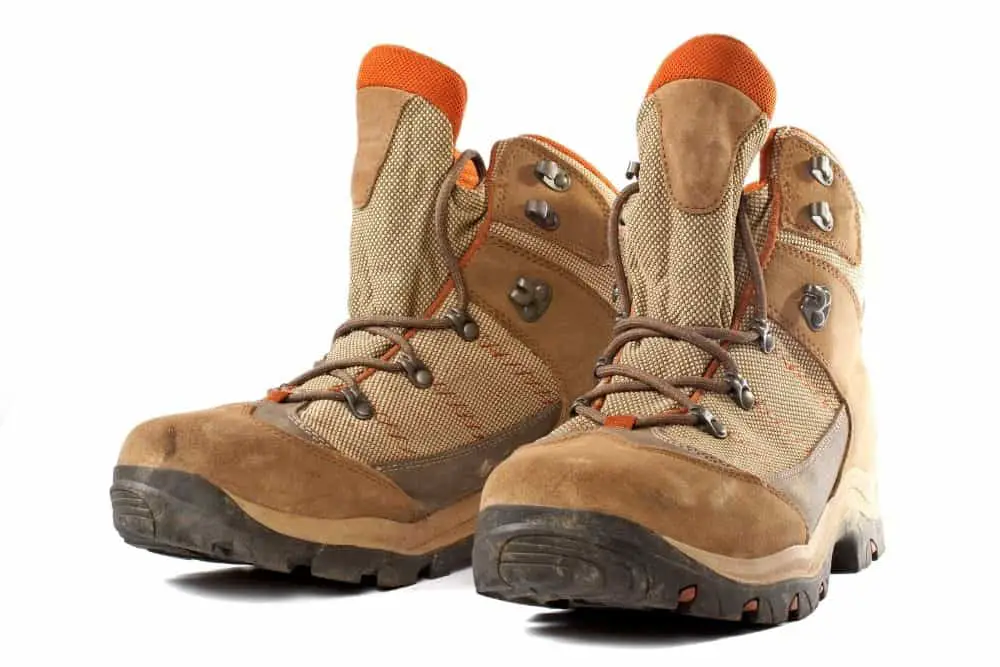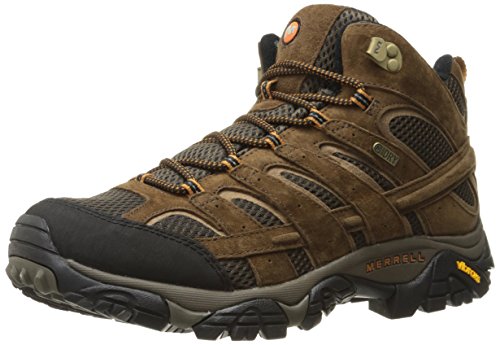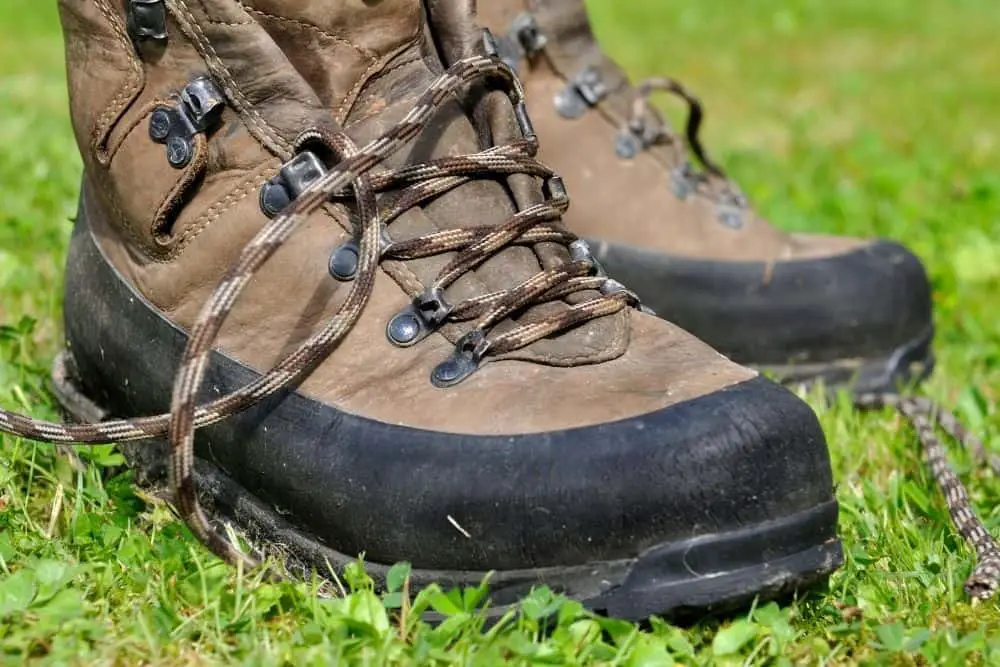Does the weight of your hiking boots really matter? Without mincing words, the answer is an emphatic yes. Whether you are hiking or cycling, weight is always an enemy of anyone that is traveling on his or her own might—that is without any mechanical aid.
Every extra pound will contribute to weighing you down when you are on foot. While most hikers focus on making their backpacks lighter, they rarely pay attention to the weight of their hiking boots because they don’t realize yet how much it drains them of energy and stamina.
Ever since the ‘one pound on feet equals five pounds on the back’ theory became popular following the ascent of Sir Edmund Hillary on Mount Everest in 1953, a lot of studies have shown that the weight on feet is even more exhausting than the weight on the torso.
Being aware of the impact weight of hiking boots on your body, the next question that would likely be running through your mind is “Why can’t all hiking boots be made lighter?”
Well, a lot goes into the construction of hiking boots which will eventually determine how much they will weigh.
Today, we are not going to only tell you the average weight your hiking boots should be but also tell you how the weight can affect your hike and which hiking boots are suitable for a particular terrain or activity.
Contents
How much does a pair of hiking boots weigh?

Hiking boots weigh 2 to 3 pounds which puts them behind Army boots (1.2 to 2.4 pounds) in terms of weight.
A popular tenet among all hikers is ‘the lighter the better’. For this reason, a lot of hikers often ditch some hiking essentials when they feel they have too much already—anything they can do without becomes an unnecessary burden.
The average weight of hiking boots is usually approximately 2 pounds.
Some sources will usually have slightly different figures when it comes to the weight of hiking boots. Also, it is important to mention that the weight of men’s hiking boots will usually be higher than that of women. This weight is usually attributed to the difference insoles and upper materials.
Nevertheless, the 2 pounds average weight should serve as both a guide and a benchmark when making your purchase. In other words, the weight of most hiking boots will usually start at 2 pounds but some go over 3 pounds.
If your target hiking boot weighs over 2 pounds, you already know that you are going above average. Yet, does that make hiking boots that weigh 1 pound an excellent idea?
What features affect the weight of hiking boots?
Hiking boots are either made of leather, suede, or nylon and each of the materials will affect the weight of your hiking boots. Also, the height of the ankle support will also add a few ounces to the overall weight of your hiking boots.
While nylon may give a lighter construction than leather, it is also less durable. Let’s see how the different parts of a hiking boot can affect the overall weight.
Material
Of all the materials used in the construction of hiking boots, leather is the toughest and heaviest.
Therefore, if comparing two hiking boots of identical sizes, the one made of full-grain leather will most likely be heavier than the one made of nylon or suede. Generally, full-grain leather hiking boots will weigh about 3 pounds.
Besides the heavier weight, leather hiking boots come with other perks including better durability and better protection from harsh environmental conditions due to their multi-layer structure. In addition to that, there is an aura of class that comes with genuine leather.
While suede is still a form of leather, it is not gotten from animal skin like full-grain leather—rather from other means. Boots made of suede are usually lighter and softer than tanned leather and will weigh about 1.5 – 2 pounds.
Fabric boots make use of synthetic materials like polyester, nylon, or Cordura in their construction and were born out of the necessity to make boots lighter. With advancements in technology, fabric boots are not only lighter but have become more comfortable.
These factors have led to the jump in their popularity. On average, the weight of fabric with partial leather hiking boots construction will fall around 2 pounds and less.
Outsoles

The majority of the weight of hiking boots would probably come from the soles which encompass the outsoles, midsoles, and metal shank.
The rubber outsoles are often cheaper than other synthetic materials which led to the production of more affordable hiking boots.
Also, rubber outsoles are easier to form and require less treatment compared to leather outsoles. The combination of these factors led to the abandonment of leather outsoles for rubber outsoles.
The size and density of the rubber outsoles will contribute enormously to the overall weight of the boot.
In other words, the wider and thicker the rubber outsoles, the heavier the boots will be. Other types of outsoles that will affect the weight of your boots are: Commando outsoles, Cork nitrile outsoles, Ridgeway outsoles, Crepe outsoles (you can find them mostly in Clarks Desert Boots).
Shanks
Shanks are tucked into the interiors above the outsoles and their main purpose is to keep the boots in shape. Shanks are made of metal (steel) or nonmetal (fiberglass, plastic, or nylon).
Steel shanks are usually stiffer than the rest, add considerable ounces to the boots, are sensitive to temperatures, and will annoyingly set off metal detectors.
When it comes to lightweight, non-metal shanks like composite, TPU or hard plastic are more desirable than steel.
Although these materials are not as hard as steel, they are still extremely supportive and flexible. Most modern hiking boots incorporate non-metal shanks to keep their weight light.
Toe caps

We made the distinction some time ago that hiking boots do not have toe caps. Toe cap is a common feature found in work boots and is specifically designed for protecting the toenails.
However, we know that a lot of hikers for one reason or another still use their work boots for hikes. When choosing a work boot for hiking, pay attention to the material used for the toe cap.
Toe caps are usually made of varying materials namely steel, stamped aluminum, injected aluminum alloy, composite, glass fiber, and carbon fiber. Each of the materials will impact the weight of the boots in a different way.
For example, while a steel toe cap is the most resistant to impact, it is also the heaviest of them all and would add considerable ounces to the overall weight of your boots.
Toe caps made of composite or glass fiber will give around minus 40% the weight of steel. However, their biggest setbacks are their poor resistance to fire and inconsistent performance.
For the lightest protective toe caps, choose the ones with toe caps made of carbon fiber. They are usually 60% lighter than steel—although they often come at a stiffer price.
Upper
Hiking boots usually come in three design variants namely the low-cut, mid-cut, and high-cut designs. The higher the cut, the more material that will be needed for the boots and the heavier it will become.
Insulation

Most manufacturers include some form of insulation in their hiking boots to make them more comfortable for hiking in colder regions or to make them waterproof.
These insulating materials are often thick and contribute to making the hiking boot heavier than those without insulation. The lesser the padding the lower the weight.
Also, the incorporation of shock absorption or anti-fatigue technologies will add to the overall weight of the boots.
Size
Logically, a boot of size 32 should weigh less than a boot of size 40. Larger boots will need more material to complete which adds to their overall weight.
For example, the difference in the material used to make a boot of size 40 can add up to 1 pound when compared to a similar boot of size 35. The same is the case with the height of the boots.
Which is better, heavy or lightweight hiking boots?
When shopping for hiking boots, you will likely come to the point where you will have to choose between lightweight or heavier hiking boots. Your choice at this point will depend on a number of factors as we will discuss below.
Condition of the terrain

The more rugged the hiking terrain, the sturdier your hiking boots should be to keep you safe from hurting your feet. Heavier hiking boots will be in a better position to absorb shock and keep your feet more comfortable.
However, for moderate hikes on plain terrain, there is no point carrying a deadweight with you. A pair of lightweight boots will do the trick.
Hiking activity
When hiking a rocky terrain where you have to do lots of climbing, a pair of high-cut hiking boots will be your best bet. It provides proper ankle support compared to low-cut hiking boots.
However, expect high-cut hiking boots to be heavier because of the extra material invested in making the shaft. Low-cut hiking boots may not do enough to prevent you from twisting your ankle—and you certainly don’t want that.
Environmental condition
The environment and weather patterns are not under our control. Due to the impact of global warming, we are seeing more extreme temperatures.
Thankfully, we have weather forecasts to tell you what the weather will look like before you set out on your hike. If the weather is going to be burning hot, lightweight hiking boots will be a better option because they will likely be more breathable.
On the other hand, if the weather forecast predicts rain or snow, you will need sturdier hiking boots to keep the elements out and keep your feet dry and warm. In this case, heavier hiking boots will be a better option.
How heavy is a lightweight hiking boot?
While the ideal weight of hiking boots is 2 pounds, any pair that is less than 3.3 pounds is usually considered moderately lightweight. If you are searching for lightweight hiking boots, you should be looking at boots made either of synthetic material or nubuck leather.
Hiking and work boots will on average weigh anything from 2 to 3 pounds while steel-toed boots are usually heavier at about 4.0 to 4.5 pounds. Alloy toe boots are usually up to 1.5 pounds less heavy than boots with steel toes.
While taking off a pound from your feet will increase comfort and make you more agile, it is crucial to make sure that you are not sacrificing foot protection and ankle support especially if you are a heavy hiker. In the long run, hiking boots with adequate protection will always trump the lightest hiking boots.
How much does Merrell hiking boots weigh?

The waterproof model of Merrell hiking boots weighs 2.4 pounds which is still in the region of lightweight hiking boots for hiking long distances according to our findings. However, the non-waterproof ventilator models usually cap at 2 pounds per pair of men’s size 9.
The brand was founded in 1981 by the partnership of John Schweizer and Clark Matis. Over the years, the brand has positioned itself as one of the leading hiking footwear in the industry and focuses mainly on sustainable manufacturing.
Does hiking boot weight matter?
As we mentioned in the introduction, the weight of hiking boots matters a lot. Every additional pound slows you down during a hike—and where you carry the weight makes a lot of difference.
Unlike backpacks, there is no way of striping down your boots to make them lighter once you have made the purchase. That means you will be stuck with whatever weight you have.
This is why it is always important to properly evaluate your capabilities before making the purchase. The heavier the hiking boots, the more likely they will lead to generalized foot pain.
One of the features of really heavy boots is exaggerated ankle support. While the intention is a good one, too much of it can lead to injuries to the ankle.
Also, the heavier the boots, the higher the likelihood of experiencing heel slip especially if the knotting is not tight enough to hold them in place. Stiffer more rugged boots often feature a narrow toe box which will cause severe pain to the toes.
Lastly, heavier boots increase the work on your calves which may lead to a muscle pull. So, besides simply weighing you down, heavy hiking boots can pose other health risks—which you definitely want to avoid.
Conclusion

Inasmuch as the benefits of lightweight hiking boots are indisputable, it is always important to pay attention to how much load you can carry on your backpack without ruining the boots.
Nevertheless, some analysts suggest that you can carry a fully loaded 70-liter backpack without ruining hiking boots.
While it is generally recommended that you choose hiking boots that weigh 2 pounds, there are cases where heavier hiking boots will be a better choice. This includes when you are hiking inclined, rough, or in terrains with harsh environmental conditions.
It is also important to mention that men’s boots are usually heavier than women’s boots and the larger the size of the boots, the weightier they will likely become.

